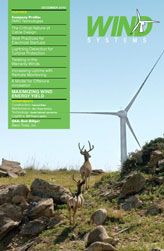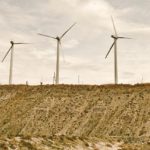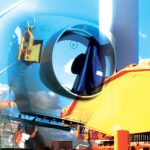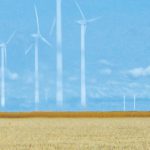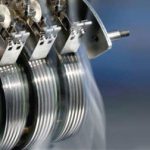It’s no secret that the overall success of a wind farm is primarily determined by the amount of power it produces, which translates into revenue generation for its owner. Yet the prevailing industry measure of a wind turbine’s performance remains its availability to produce electricity if the wind is blowing. In fact, virtually all original equipment manufacturers base their wind turbine warranties in part or in whole on availability metrics. As a result, technicians at wind farms across the United States often find themselves scrambling to get turbines back online following an unexpected interruption in availability.
Sometimes these efforts do little to boost profitability, particularly if restoration occurs during a lull in wind resources. In other instances, wind farm operators authorize “quick fixes” instead of addressing root-cause problems that may impede high performance over the long run. At Duke Energy’s nine U.S. wind farms, the focus is simple: leave no stone unturned in the quest to maximize each turbine’s energy yield. While availability is still measured and effectively managed, achieving higher energy yields is what helps the company wring as many electrons—and dollars—as possible from its wind power assets. Duke Energy’s formula for success is based on the same strategy that helped the company become one of the largest electric power holding companies in the country.
Zero to 1,000 Megawatts
With regulated operations in five states—the Carolinas, Indiana, Kentucky, and Ohio—and more than 100 years of experience in the electric utility sector, Duke Energy knows how to get the most from its power generation and delivery assets. The company serves approximately 4 million customers, representing a population of roughly 11 million people. Its non-regulated commercial business unit, which generates about one quarter of the company’s earnings before interest and taxes, operates like an independent power producer.
In 2007 Duke Energy’s commercial unit launched aggressive plans to add wind energy generation to complement a diverse existing portfolio of assets in the Midwest and Latin America. The strategy: use a few key acquisitions to propel an ambitious organic project development plan.
First came the purchase of Austin, Texas-based Tierra Energy in 2007. Along with a healthy portfolio of development projects, Duke Energy took control of three wind farms that began generating electricity in late 2008. The company then netted a 50 percent stake totaling 283 megawatts in phases one through five of the massive Sweetwater project in Texas through the acquisition of Catamount Energy, based in Rutland, Vermont. That purchase raised the total capacity of Duke Energy’s wind projects under development to roughly 5,000 megawatts.
Duke Energy now has nearly 1,000 megawatts of capacity in operation at four wind farms in Wyoming, three in Texas, one in Colorado, and another in Pennsylvania. The company’s continuously replenished pipeline of potential development projects currently totals approximately 5,500 megawatts.
Improving Profitability
In the spring of 2009, leaders in Duke Energy’s wind unit took notice of a troubling trend: the company’s wind farms were earning very high marks for turbine availability, but some were missing their profitability targets. Upon closer inspection, they diagnosed three key problems.
First, some turbines were not producing the maximum-rated output as prescribed by their manufacturers, even though availability figures remained high. Second, maintenance schedules were often established with the sole intent of boosting availability rather than maximizing actual production and revenue generation. Finally, technicians were sometimes dispatched to return offline turbines to service just in time for periods of sustained low wind. “We kept hitting our availability targets,” according to Jason Allen, Duke Energy Generation Services vice president of operations. “When we delved deeper, however, the question soon became ‘Are we hitting the right bull’s-eye?’”
Allen assigned a team to compare the power curve specified for every wind turbine in Duke Energy’s fleet, totaling 650 units at the time, to actual output. The results were eye opening. Some turbines:
• Cut off before achieving their manufacturer-specified maximum rating (Figure 1);
• Backed off early due to high generator temperatures, possibly due to faulty thermocouples (Figure 2);
• Exhibited partial back-off tendencies due to high generator temperatures, possibly the result of additional load on generator bearings from yawing (Figure 3);
• Showed “candy-cane” behavior, where turbine performance worsened as wind speed increased instead of following the vendor’s power supply curve (Figure 4);
Other turbines’ output lagged behind the manufacturer’s power curve, or sagged through the middle of the curve. The analysis team was pleased, however, to find that most turbines yielded perfectly clustered data, with output matching the vendor’s power curve precisely. In some cases turbines actually produced more power than originally guaranteed by their manufacturers. “We achieved exceptional results through condition-based monitoring and world-class maintenance, but our analysis showed that we were still leaving money on the table,” Allen says. Figure 5
Power Operations Manager Tom Paff led the team charged with monitoring wind farm performance, working with site personnel to troubleshoot problems with underperforming turbines, and helping prevent the potential loss of future revenue. In one case his team identified a pitch ram misalignment on a turbine at Duke Energy’s Notrees Windpower Project in Ector and Winkler counties, Texas, that resulted in tens of thousands of kilowatts in lost electric generation each month. Had the combination of performance and condition-based monitoring not uncovered the problem, Duke Energy would have missed out on nearly $30,000 in annual sales from that single wind turbine. The team tackled dozens of similar seemingly minor issues, resulting in higher energy yields that translate into increased revenue for each wind farm and the company. Figure 6
In addition, Jason Allen directed regional and site managers to refine their approach to scheduling maintenance and dispatching crews for repair work. “Turbine availability is an important metric, but never more so than when the wind is blowing,” he says. “It’s bad to have a turbine come back online just in time for the wind to die down. It’s even worse to have a technician performing routine work on a turbine when we could be producing electricity at peak capacity due to very windy conditions.”
Allen’s teams at Duke Energy’s nine wind farms now try to schedule basic maintenance and equipment upgrade work when wind resources are forecasted to be low. Wind forecasts also play a major role in determining when to send technicians to restore off-line turbines.
“Why wake a technician up in the middle of the night, get him out of bed, make him drive to the site, and pay him overtime just to restore a wind turbine that won’t even produce much power or revenue during the day, when winds at some sites are typically lighter? As long as you’re fully complying with all turbine warranty guidelines it makes more sense to dispatch work crews strategically, based on wind forecasts and the time of day.” Figure 7
Predicting Mother Nature
There’s an old saying in Wyoming, where Duke Energy owns and operates four wind farms: if you don’t like the weather, wait 10 minutes and it’ll change. Accurately predicting that change is another story. That’s why Duke Energy’s wind power unit—which had been contracting with third-party vendors for weather imagery, alerts, and real-time forecasts—turned to the broader corporation’s meteorology team in the spring of 2009 for help.
“Our group had already developed a comprehensive suite of weather monitoring and forecasting tools to support power generation and delivery operations in both our regulated and commercial businesses,” says Meteorology Director Nick Keener. “The wind group came to the conclusion that Duke Energy’s in-house meteorology team could create a robust, highly customized solution, and at a fraction of the cost.” Figure 8
In addition to radar and satellite weather imagery, meteorology built a smart phone-networked notification system that allows site personnel to receive alerts when lightning is detected within a 60-mile radius of a wind farm and alarms when lightning is within 30 miles. “First and foremost, the software is designed to keep our employees and contractors safe,” Keener says.
One challenge for Duke Energy’s meteorology group involved forecasting winds at hub height, where the turbine blades connect to the nacelle. Senior Meteorologist Steve Leyton explains. “We have access to the same numerical weather prediction models as all the private vendors,” he says, “However, none of the models we looked at explicitly predict wind speeds at hub height. So we had to devise our own methodology, which involved reviewing the science and developing equations to account for different wind profiles at that height.”
Performance Monitoring
The detailed, site-specific weather reports and forecasts generated by the meteorology group’s end-to-end software solution are delivered in real-time format to wind farm personnel, as well as to staff members in Duke Energy’s new Renewable Energy Monitoring Center (REMC).
Located in Charlotte, North Carolina, where Duke Energy is headquartered, the REMC serves as the nerve center for the company’s entire renewable power fleet, including the commercial unit’s growing portfolio of solar farms. Experienced operators staff the REMC 24 hours a day, every day of the year. In addition to wind forecasting, the REMC enables virtually instantaneous turbine alarm response and remote resets.
Original equipment manufacturers monitor many of the wind turbines in Duke Energy’s fleet, pursuant to original purchase agreements. But according to Tom Paff, turbines that “trip” and go offline can sometimes go unnoticed by the OEMs for long periods of time because they have so many units to monitor throughout the country. “Time is money, and we’re saving both by learning about turbine performance issues as they occur,” he says. “Around the clock performance monitoring is a key driver for higher energy yields at Duke Energy wind farms.”
The REMC, powered in part by dependable wind and severe weather forecasts, has been so successful that Duke Energy is now accommodating requests by other wind farm operators to monitor their assets, as well. “It wasn’t part of the original game plan,” Paff explains, “but once word got around about how integral the REMC was to our success, we decided to open the doors to a select number of other renewable project operators. It’s a win-win scenario, because our clients are saving money and we’re achieving better economies of scale.”
Looking Ahead
Keith Trent, group executive and president of Duke Energy’s Commercial Businesses, believes superior operational efficiency will continue to be a key differentiator in the competitive wind power industry. “It’s more critical than ever to effectively manage the assets you have in operation,” he says. “That’s what the energy yield approach is all about—doing everything you can to make the most of what you’ve got.”



















